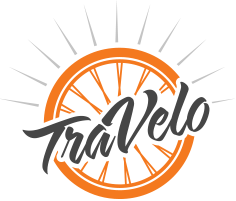10 Things to Know Before Chasing the Tour de France, by www.CyclingTips.com.au August 08 2013
CyclingTips' top 10 things you need to know before heading over to the Tour:
Don’t expect to see much of the actual race by being there. Sitting on the couch is the best way to do that. Being at the Tour is about being part of the show — you’re not there to necessarily see the Tour, you’re there to experience the Tour. Soak up the atmosphere and the excitement. You can’t get that by watching the race on TV. A great compromise is to go for a ride that intersects with the race route, watch the riders come past, then head to a nearby bar to watch the rest of the race on TV. Of course to do that you’ll need to …
Bring your bike. There’s no better way to see the Tour de France (and the most beautiful parts of France) than on a bike. You get to experience the same climbs as the riders do and when they come flying past, you have first-hand experience of what the climb is like and just how fast they are going. If you do bring your bike, avoid taking trains if you can. Lugging a bike bag or box on and off trains is a pain in the arse. But if it’s a choice between taking your bike on trains, and not bringing your bike at all, bring your bike. Or hire one.
If you can spare the extra money, go with a tour group. I can’t recommend this highly enough. Chances are you’ll only have a couple weeks to play with and you don’t want to waste it. Being with a Tour group will ensure that you see many of the best things the Tour (and France) has to offer, all with a structure that allows you to get more done with your time. Not only that but being with a tour group removes the hassle of organising accommodation and transfers yourself.
Don’t expect everyone in France to be deeply engrossed by the Tour. Sure, the race is part of their national heritage and identity, and it is a massive tourism driver, but most people in France are largely apathetic towards the race … until it comes through their town.
Expect large crowds, traffic jams, and long delays. If you get caught in the wrong place after a stage finish, you could well be stuck in an hours-long traffic jam, unable to move at all. Either plan ahead so that you’re avoiding doing whatever everyone else is doing (e.g. coming off a mountain after a stage finish) or accept that crowds, traffic jams and delays are part of the spectacle. Alternatively, if you don’t want to deal with the crowds but want to see a Grand Tour, maybe head over to the Giro or Vuelta instead.
If you want to interact with the riders stage starts are better than stage finishes. You get to see the riders casually hang out around the start-line for an hour before their departure. If you’re lucky enough to know someone who can get you access to the “Village Tour de France” (the barricaded section that the team buses and riders are in), take advantage of it. You’ll need a pass that allows you to walk freely amongst the riders and vehicles inside the Tour Village. These passes aren’t overly hard to come by, but you usually need to know somebody who is connected. It’s also worth noting that the first half of the Tour gives you much better access to the riders and race than the latter half. It’s often not as picturesque as the later mountain stages, but it’s not nearly as crowded.
Don’t try to fit too much in. Of course coming to the Tour de France means that you’ll be travelling a lot, but don’t try to see every stage. If nothing else that would mean a lot of packing and unpacking — not much fun. Often you can pick a town to stay in that will allow you to see two or three parts of the race or multiple stages.
Try to stay in towns that host a rest day. This means you get three days around the race — the previous day’s finish, the rest day and the start of the next stage — all without having to move around.
Make the effort to see a mountain top finish. The crowds will be massive so be prepared for long delays and plenty of traffic once the race passes through. If you’re planning on taking a caravan to a summit finish, you’ll want to be up there with as much time as possible to get a spot. I’m talking as much as a week or more.Alternatively, if you don’t want to deal with the crowds on a mountain-top finish, head to the penultimate climb. The crowds will be smaller and you’ll still get to see the action. That said, it’s the crowd and the atmosphere that make the race so exciting so if you can be at a summit finish, it’s worth the trouble.
Learn a little bit of French. You certainly don’t need to be able to speak the language fluently — but if you can, that’s a massive benefit — but even knowing a few key phrases will open doors for you.
Source: www.CyclingTips.com.au
